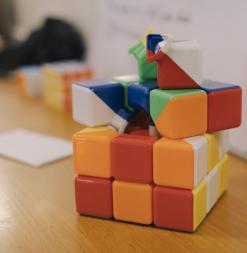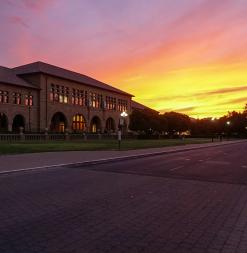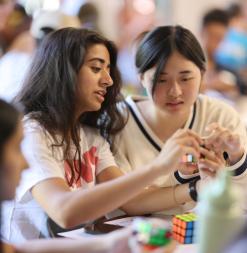SUMaC Admissions
We receive many more qualified applicants for this small program than the space we have available. The residential program will serve 40 students and the online program will serve 64 students. Applicants should consider these program sizes when selecting whether they would like to be considered for the residential, online, or both SUMaC offerings.
Application Deadline
Admissions Notification
Admissions Overview

Course Selection

Review Process

Notification of Admissions Decision
Selection Process
Admissions is competitive. We receive many more qualified applicants for this small program than the space we have available. The residential program will serve 40 students and the online program will serve 64 students. SUMaC students are selected based on their grades in math courses, their teacher recommendation, their passion for mathematics as demonstrated in their essays and other parts of the application, their prior engagement with math both inside and outside class, and their performance on the SUMaC admission exam.
Using the factors described above to determine the best fit, the Admissions Committee will place each admitted student in either the Program I course or Program II course. Most applicants accepted to Program II are very familiar with the material covered in Program I through prior participation in SUMaC or other study.
The admission exam is a collection of challenging proof-based math problems for applicants to work on at home over an extended period before the application deadline. If you are not familiar with the type of problems on the admissions exam, we invite you to consider applying to our Stanford Pre-Collegiate Summer Institutes math courses: Number Theory or Discrete Mathematics. These courses will take place online. Stanford Pre-Collegiate Summer Institutes requires a different application from SUMaC, but you can use the same account to begin and submit your application. The deadline to apply for Stanford Pre-Collegiate Summer Institutes courses is March 20, 2025.
Application Process
1. Start an Application
Create a Stanford University Mathematics Camp application account. The application account should be made with the student applicant's legal name, but a parent/legal guardian email address may be used to receive application communications.
The application is currently closed.
2. Review Application Checklist
In addition to the online application form, a complete application includes:
- Academic Records
We require unofficial transcripts for each school or academic program from which you earned grades (such as letter or numerical grades) from Fall 2022 through Fall 2024. If you have multiple grade reports from one school, combine them into a single file for upload. Homeschooled applicants should submit a document similar to a transcript with their coursework from the years listed above. Homeschooled students should also submit transcripts from any graded courses they took with a school or program during this period.
- Teacher Recommendation
We require one online recommendation form from a math teacher.
- Optional Video Essay
The video essay is an opportunity to share more about your interest in our program. You can consider it a conversation between you and our Admissions Committee. If you attend a school in which the primary language of instruction is a language other than English, we strongly encourage you to complete the video essay.
- $65 Application Fee
You may submit the $65 application fee online using a credit card. See instructions for payment at the end of the Online Application. Fee waivers can be provided if qualifications are met. Please contact precollegiate@stanford.edu.
3. Check Your Application Status
Return to the Application Status and Materials Checklist page to make sure all of your application materials have been submitted. When your admissions decision is ready, you will receive an email notification that prompts you to log in to this page for the decision.
Financial Aid
I was able to deepen my knowledge of mathematics through class sessions and problem sets, consider post-college opportunities in different math fields through guest lectures, and create memorable connections with fellow students and instructors during student life activities.
Stanford University Mathematics Camp Participant

